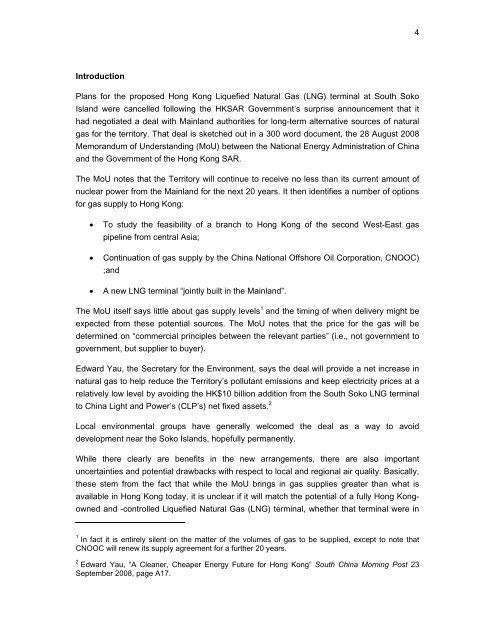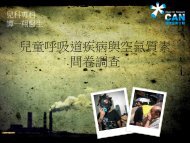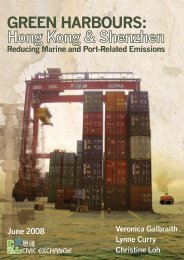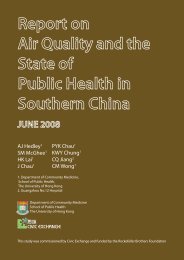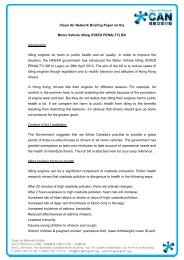You also want an ePaper? Increase the reach of your titles
YUMPU automatically turns print PDFs into web optimized ePapers that Google loves.
4<br />
Introduction<br />
Plans for the proposed <strong>Hong</strong> Kong Liquefied Natural Gas (LNG) terminal at South Soko<br />
Island were cancelled following the HKSAR Government’s surprise announcement that it<br />
had negotiated a deal with Mainland authorities for long-term alternative sources of natural<br />
gas for the territory. That deal is sketched out in a 300 word document, the 28 August 2008<br />
Memorandum of Understanding (MoU) between the National <strong>Energy</strong> Administration of China<br />
and the Government of the <strong>Hong</strong> Kong SAR.<br />
The MoU notes that the Territory will continue to receive no less than its current amount of<br />
nuclear power from the Mainland for the next 20 years. It then identifies a number of options<br />
for gas supply to <strong>Hong</strong> Kong:<br />
• To study the feasibility of a branch to <strong>Hong</strong> Kong of the second West-East gas<br />
pipeline from central Asia;<br />
• Continuation of gas supply by the China National Offshore Oil Corporation, CNOOC)<br />
;and<br />
• A new LNG terminal “jointly built in the Mainland”.<br />
The MoU itself says little about gas supply levels 1 and the timing of when delivery might be<br />
expected from these potential sources. The MoU notes that the price for the gas will be<br />
determined on “commercial principles between the relevant parties” (i.e., not government to<br />
government, but supplier to buyer).<br />
Edward Yau, the Secretary for the Environment, says the deal will provide a net increase in<br />
natural gas to help reduce the Territory’s pollutant emissions and keep electricity prices at a<br />
relatively low level by avoiding the HK$10 billion addition from the South Soko LNG terminal<br />
to China Light and Power’s (CLP’s) net fixed assets. 2<br />
Local environmental groups have generally welcomed the deal as a way to avoid<br />
development near the Soko Islands, hopefully permanently.<br />
While there clearly are benefits in the new arrangements, there are also important<br />
uncertainties and potential drawbacks with respect to local and regional air quality. Basically,<br />
these stem from the fact that while the MoU brings in gas supplies greater than what is<br />
available in <strong>Hong</strong> Kong today, it is unclear if it will match the potential of a fully <strong>Hong</strong> Kongowned<br />
and -controlled Liquefied Natural Gas (LNG) terminal, whether that terminal were in<br />
1 In fact it is entirely silent on the matter of the volumes of gas to be supplied, except to note that<br />
CNOOC will renew its supply agreement for a further 20 years.<br />
2 Edward Yau, “A Cleaner, Cheaper <strong>Energy</strong> <strong>Future</strong> for <strong>Hong</strong> Kong” South China Morning Post 23<br />
September 2008, page A17.


